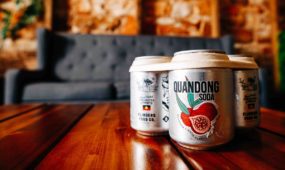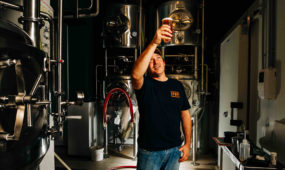Coopers to release heritage Schooner malt at end of April
Food & Wine
Australian brewer Coopers will commercially release its first heritage malt in the coming weeks as it takes aim at the booming craft beer market.

Sign up to receive notifications about new stories in this category.
Thank you for subscribing to story notifications.
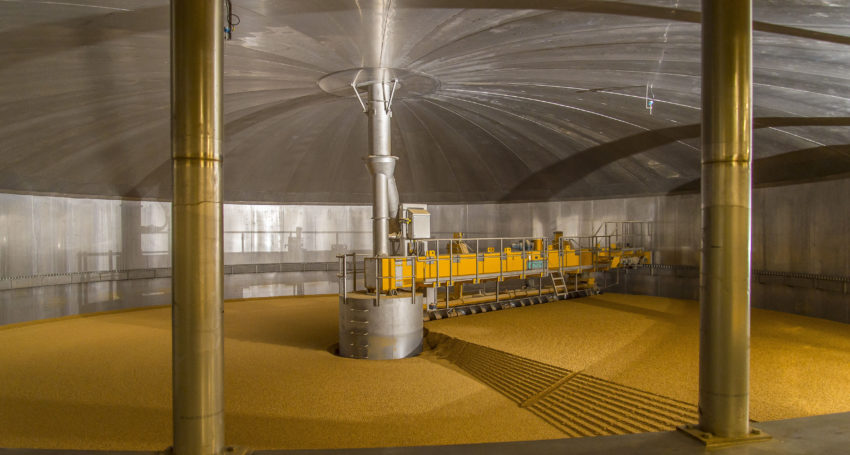
The iconic South Australian brewer opened its $65 million malting facility in Adelaide in November 2017 and has ramped up production to about 80 per cent of its 55,000 tonne a year capacity.
The family-owned brewery plans to use about a third of its malt production for its own beers while selling a third to Australian brewers and exporting the remainder.
Coopers has already been selling a single origin pale and ale malt made from Commander barley grown at Roseworthy in the Northern Adelaide Plains. It will release its first heritage ale malt made from South Australian Schooner barley at the end of April and also has plans for the June release of an single origin malt from Westminster barley grown on Kangaroo Island.
Schooner barley was developed by University of Adelaide Professor David Sparrow and released in 1983. It dominated the Australian barley industry through the ’80s and ’90s but fell out of favour in the late 1990s as higher yielding varieties were released.
However, Coopers Maltings Manager Dr Doug Stewart said Schooner’s low fermentability created the rich flavour with good mouthfeel that is ideal for hoppy beers and modern craft brewing.
He said it was a comparable alternative to Maris Otter, a heritage English variety, which is being imported as malt by a number of Australian craft breweries looking for those same hop-friendly traits.
“Schooner was superseded because the export markets required high levels of enzymes and Schooner had low levels so it wasn’t meeting the requirements but now the craft industry has grown they are looking for that lower enzyme again and it fits the bill really well,” Dr Stewart said.
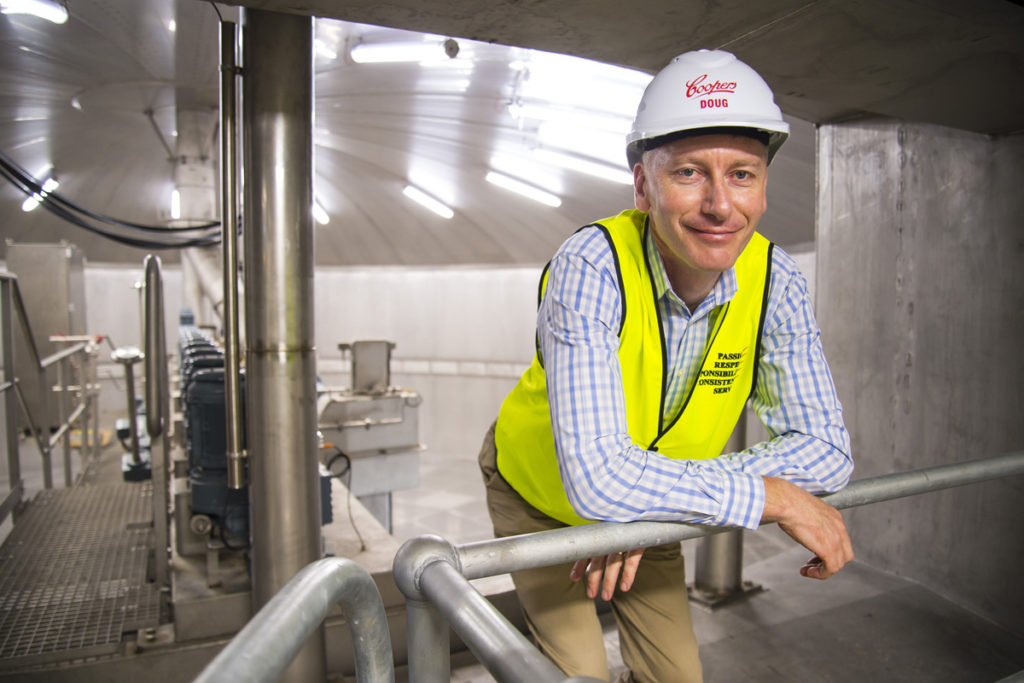
Coopers Brewery Maltings Manager Doug Stewart in the new malting facility. Picture: John Kruger.
“We pay well above the odds for Schooner because of the yield penalty but we’re happy to do that to satisfy the needs of the craft industry.
Other maltsters, such as Voyager Malt in the Riverina region of New South Wales, have been producing Schooner malt for the craft industry since 2014, but it has not been produced at the scale of the Coopers plan in recent times.
“It’s not for everyone but what we hope is that it will largely replace the Maris Otter, which is very expensive because of freight costs and it has a larger carbon footprint because of the ‘food miles’.”
Coopers is the largest Australian-owned brewery and made its first brew in 1862. It sold its previous malting plant Ausbulk in 2002 to help reduce debt from building its Regency Park brewery. The new maltings allows Coopers to bring its malt production in-house again and opens up new markets.
“It gives us control over the raw material for better consistency and initially the thought was to build a small maltings just for Coopers’ use but just in terms of capital cost per tonne it was prohibitive to build a 20,000 tonne maltings,” Dr Stewart said.
“The sweet spot is about at that 55,000 tonne mark so that meant we needed to keep a third for ourselves and on sell about two thirds to other brewers.”
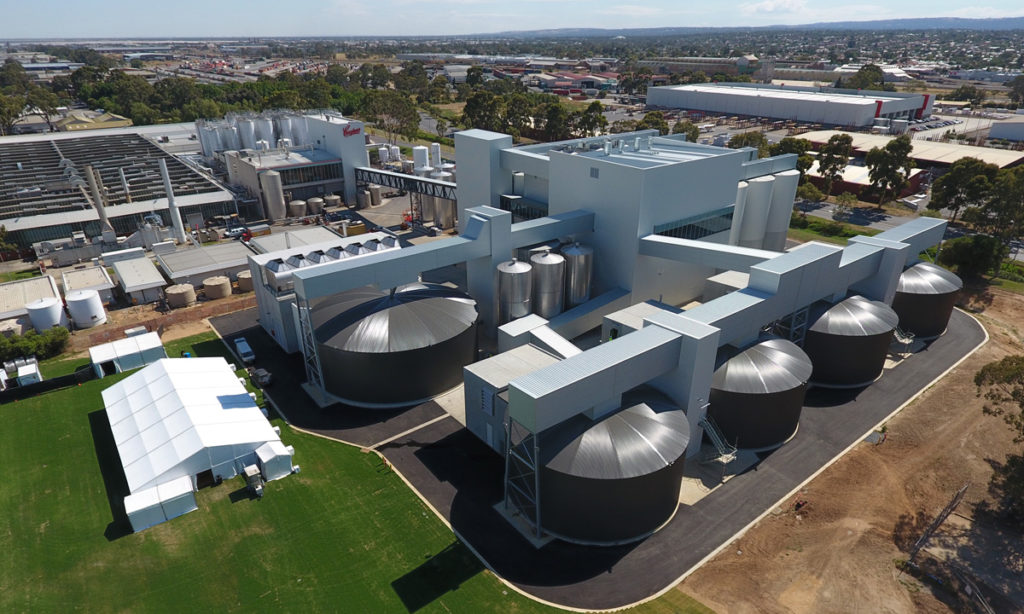
An aerial view of the Coopers malting plant at brewery in Adelaide.
Coopers is also making malt aimed at the Asian export market from barleys such as La Trobe and Scope, which are suitable to be blended with rice or corn sugar adjuncts.
It has so far sent about 2000 tonnes of malt to Thai Beverage in Thailand to be used in Chang beer and is in talks with a number of other Asian brewers.
Australia produces on average around 2.3 million tonnes of malting barley and 6 million tonnes of feed barley each year. The quality of Australian malting barleys is considered among the highest in the world.
Dr Stewart said the maltings allowed for batch sizes of 180 tonnes and had been built specifically with specialty batches in mind.
He said the segregation and storage capabilities meant three or four of the 12 silos at the plant could be reserved for the craft industry.
“We’re really focussing on craft because we regard ourselves as craft anyway – we’re bigger craft but we’re primarily ale brewers and we feel strongly aligned to that market segment,” Dr Stewart said.
Being a smaller maltster we like to think that we give the craft sector the attention it deserves.
After the Schooner heritage malt release, Coopers will release an single origin malt made from Westminster barley grown in the pristine environment of Kangaroo Island.
Dr Stewart said provenance was becoming an important factor in the craft brewing industry in a similar way to how it has long been in the wine industry and single origin malts could become a popular choice among brewers, particularly from regions known for beauty or quality.
“There’s a saying that goes something like ‘where the grape grows well so too does the grain’,” he said.
“Down in Coonawarra, Clare Valley and Barossa there are lovely barley growing areas so if you pick an emotive place it’s associated with quality and it just adds to the story so there are certainly opportunities like that.
“The whole barley terroir scenario has been raised and the only way we’ll find out is if we start malting these single parcels and sell it to craft brewers who are leading the charge.
“We can also do that for Coopers beers – we typically have a few seasonal beers we make through the year and we have our Vintage Ale we make once a year so we’ve got opportunities to promote a region or a variety of barley to add to the story for those sort of beers.”
Jump to next article


